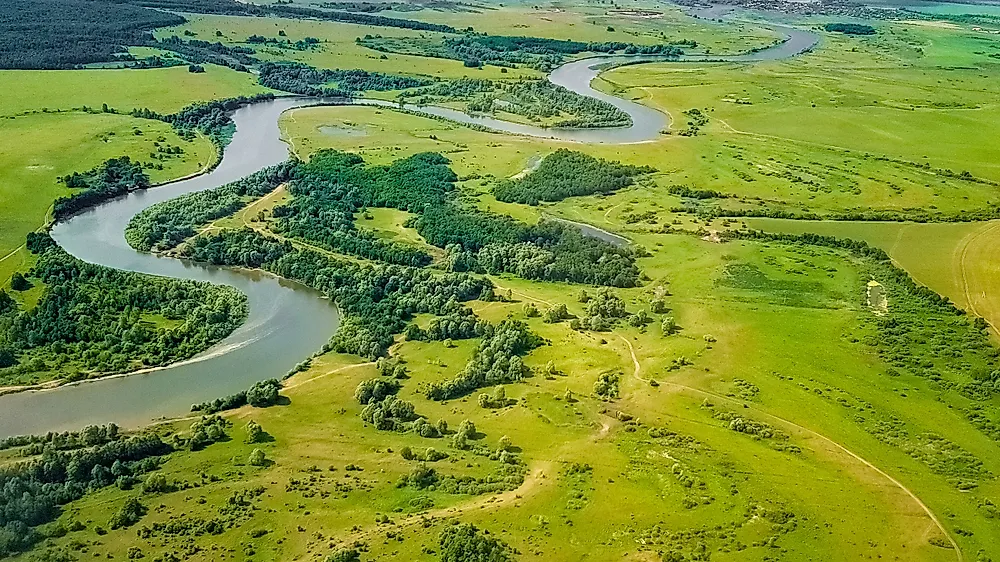What Type Of Climate Does Russia Have?

Russia, officially known as the Russian Federation is a country located in northern Asia. It borders the Arctic Ocean, European nations, and the Pacific Ocean. The country is inhabited by around 144.5 million people. About 11.5 million of this population lives in Moscow, which is the capital city of Russia. Russia is also the 11th largest city in the world.
Russia shares international borders with fourteen countries. These neighboring states are Azerbaijan, Belarus, Latvia, Estonia, Finland, Georgia, Kazakhstan, North Korea, China, Ukraine, Poland, Norway, Lithuania, and Mongolia. In addition to this, Russia also shares maritime boundaries with the US and Japan. The country has a total area of 17,098,242 km2 making it the largest country in the world followed by Canada. About 16,995,800 Km2 of Russia’s area is covered by land whereas the rest is covered by water bodies. The country also has a relatively longer coastline of 37,653 km. The very highest point in the whole country is Gora Elbrus which is 5,633 meters above the sea level and the lowest being the Caspian Sea which is -23 meters below the sea level.
The Climate Of Russia
Due to its large size, many parts of Russia are located far away from the sea and have a continental climate. The climate is characterized by long, humid cold winters and short summers. The summer seasons are warm and shorter within the Artics. However, as you get to the south and in the central parts, it becomes even hotter which makes these parts ideal for agricultural production. Central parts of Russia support the growth of grains, fruits, and vegetables. Even the winters are not extremely cold as the average temperatures do not exceed -15°C.
It should be noted that summers can be very hot; especially in places that experience very cold winters. Dramatic climate changes are popular in Russia. For instance, in Vladivostok, which is located in the Far East, temperatures may shift from -34.4°C in January, rising to a high of 33.6°C in July. During the winter season, temperatures in Russia are very cold ranging from -30˚C and lower. Sometimes, the country experiences heavy snowfall with the first snow falling in October. The winter season in Russia is significantly influenced by strong easterly winds called Buran. The very cold winters are associated with the country’s high latitudes, lack of topographic barriers, and the extensive size of land. In the northern parts of Russia, the winters are milder and characterized by frequent precipitation all through the year. These parts of the country are influenced by the Baltic Sea. Summers carry along with showers and thunderstorms in the afternoons and evenings. Sunshine may be in existence for about 9 hours in summer.
Amount Of Rainfall In Russia
The annual rainfall level is not very high across the country although it varies from place to place. Rainfall is mostly experienced in the western parts of the country around Moscow and St. Petersburg. These places receive an average of about 690-750 millimeters of rainfall throughout the year. On the other hand, the southeastern and southern parts of Russia such as Novosibirsk, Ulan Ude, Omsk, Chita, and Chelyabinsk are quite dry. They receive an annual average rainfall of below 200 millimeters. Snow falls during winter with small parts of the country such as the south experiencing snow cover. In some areas, snow may last for up to six months as the ground is permanently for that duration. However, in other parts, the snow on the surface is quickly swept away by strong winds before hardening leaving the ground bare.
The Climate In Siberia
Siberia forms part of the bigger northern and western Russia as it spreads over half of the country’s landmass. It is shielded from the east, south, and west by a ray of mountains. This region is specifically known for its long, harsh winters. The temperatures reach way below the freezing point throughout the winter season and this extends even into the month of April. The eastern central parts of Siberia around Yakutsk experience a temperature of -41°C and this even reduces further on the northern central parts to a temperature of -47°C. On average, about 240 millimeters of rain falls throughout the year.
The month of July normally experiences the highest rainfall of about 40 millimeters and a minimum of between 8-10 millimeters per month from December to March. Winters are dry and can be very dangerous due to the very low temperatures, strong winds, and snow storms. Snow covers the ground from the end of October to mid-March in some years. The coldest place in Russia is Oimjakon which is found in central Siberia. Temperatures at Oimjakon decrease to as low as -50˚C in January. Summers have relatively low snow and ice. In addition, during these warmer periods, the high temperatures melt away the snow that accumulated during winter. The temperatures rise above the freezing point to an average of about 44°C in some places like Yakutsk. The southern plains, located along the Trans-Siberian Railway, exhibit relatively warmer temperatures and longer summer. The temperature ranges from -14°C in January to 19°C in July. Yekaterinburg near the Ural Mountains receives an annual rain or snowfall of about 500 millimeters annually.











